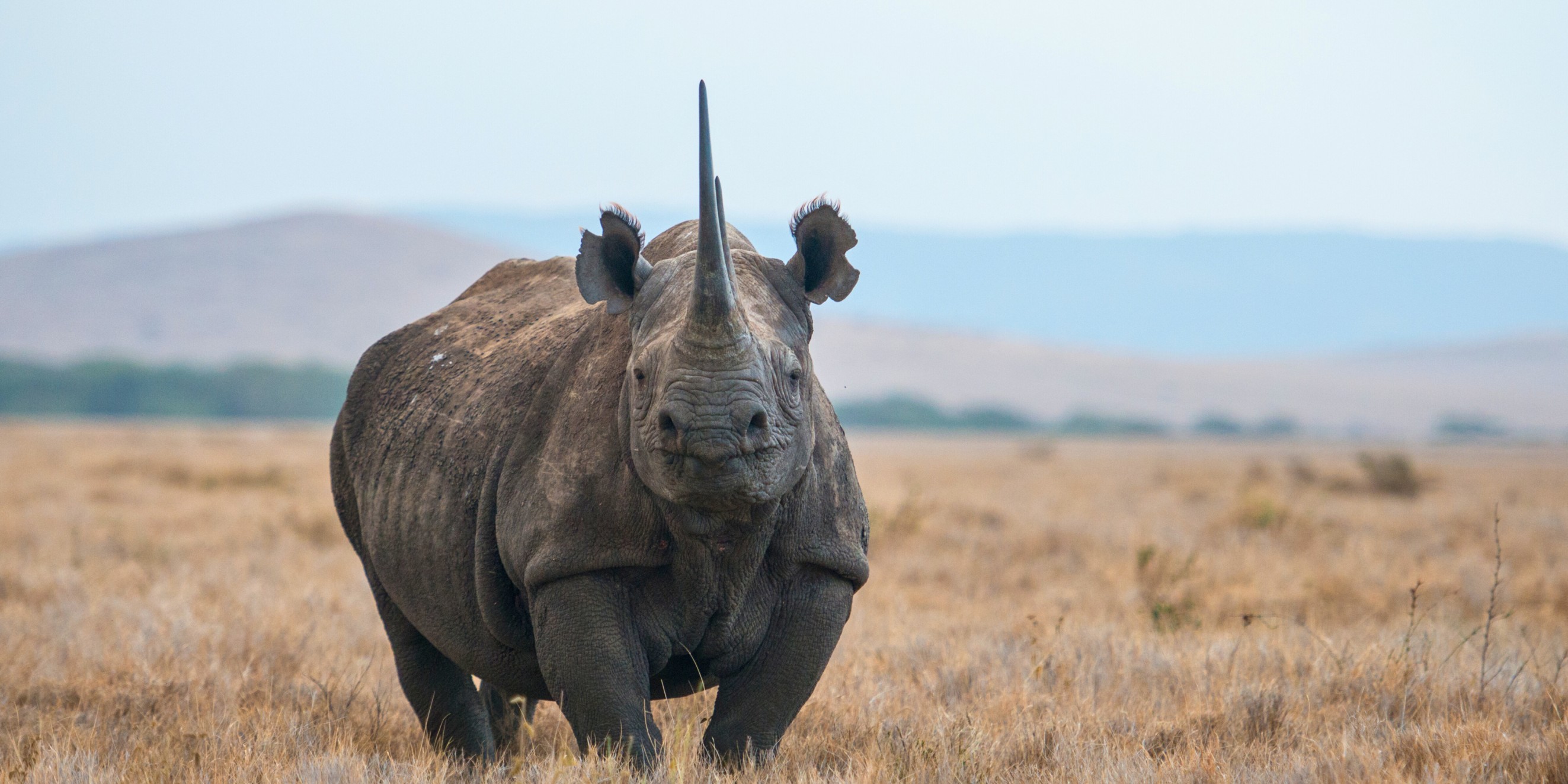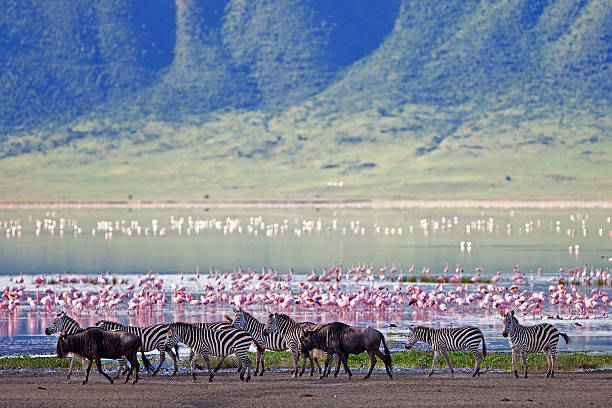Conservation Milestones
Black Rhino Recovery
The Black Rhino population in Ngorongoro has grown from a mere 11 individuals in the 1990s to around 30 today, thanks to anti-poaching patrols and partnerships with conservation organizations like the Frankfurt Zoological Society. This incredible recovery showcases the success of sustained conservation efforts in the region.

Lion Population Support
Ngorongoro’s lion population is also benefiting from the Kope Lion Initiative, which reintroduces lions from the Serengeti to strengthen the genetically isolated prides in the crater. This initiative ensures a healthier gene pool and a better chance of survival for one of Africa’s most iconic predators.
UNESCO Sustainability Strategy
Ngorongoro continues to uphold its UNESCO World Heritage status with a focus on sustainable tourism. The implementation of visitor limits, off-road driving restrictions, and community-led tourism initiatives all contribute to preserving the environment while still offering a fantastic experience for tourists.
Enhanced Safari Experiences
Night Safaris
One of the latest exciting offerings is the night safari experience. After the sun sets, Ngorongoro offers a different perspective of the wilderness. With advanced safety protocols, you can enjoy seeing nocturnal animals like hyenas, genets, and other predators that are rarely seen during the day.
Private Guided Tours
For a more personalized and intimate experience, private guided tours are now available. These exclusive game drives allow for flexibility and can be tailored to suit photography enthusiasts or those looking for a quieter, more secluded safari experience.
Maasai Cultural Walks
For a truly immersive cultural experience, consider joining a Maasai-guided bush walk. These walks, available at several lodges, offer a unique chance to connect with local Maasai guides, learn about their traditions, and explore the land they’ve called home for centuries.
Infrastructure Upgrades
Improved Accessibility
Ngorongoro has seen significant improvements in its accessibility, with newly upgraded roads leading from Arusha to the park, ensuring smoother, safer transfers. Additionally, Ngorongoro and Ndutu airports, which were temporarily closed for upgrades from April to June 2025, will reopen with extended runways and modern terminals, allowing larger aircraft and providing visitors with a better arrival experience.
Enhanced In-Park Facilities
New visitor centers have been built within the park, offering educational exhibits about Ngorongoro’s unique ecology and history. For the ultimate wildlife experience, observation decks and photo-friendly viewpoints have been added to ensure that every moment in the crater can be captured with stunning visuals. Eco-restrooms and wheelchair-accessible paths ensure a comfortable experience for all visitors.
Eco-Conscious Innovations
Solar-Powered Lodges
Lodges like The Castle at Ngorongoro, and Naserian Safari Camp have embraced solar power, reducing their carbon footprint while maintaining luxury and comfort for guests. These green initiatives are part of Ngorongoro’s overall commitment to sustainability.

Electric Safari Vehicles
The park is also introducing electric safari vehicles, which offer quieter and more environmentally friendly game drives. These vehicles ensure a smoother and more intimate experience with wildlife, as they produce less noise pollution, allowing visitors to get closer to the animals without disturbing them.
Waste Management Systems
Ngorongoro continues to implement advanced waste management systems, preserving its pristine landscapes. These systems are designed to reduce human impact on the environment, ensuring that the area remains a beautiful and sustainable destination for years to come.
New Accommodation Options: Naserian Safari Camp
A new addition to Ngorongoro’s diverse range of accommodations is Naserian Safari Camp, located just a 20-minute drive from the crater. This intimate camp offers only 10 rooms, ensuring an exclusive experience for guests. Located within the Ngorongoro Conservation Area, Naserian Safari Camp is a great base for exploring the crater’s vast array of attractions, including walking safaris and cultural visits to the Maasai Tribe. While this is one of the newest options, there are several other accommodations that offer similar access to Ngorongoro’s spectacular wildlife and landscapes, ensuring every guest finds an ideal spot to stay.

Conclusion:
As Ngorongoro continues to innovate, it ensures that visitors receive an unforgettable safari experience while maintaining its dedication to sustainability and conservation. From new luxury camps and exclusive safari experiences to eco-conscious innovations and advanced infrastructure, 2025 is set to be an exciting year for travelers. Whether you’re coming for the migration, a night safari, or a Maasai cultural walk, Ngorongoro remains an unmissable destination for those looking to explore Tanzania’s wildlife and cultural wonders.




